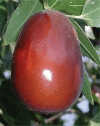Etiological aspects of intragastric bezoars and its associations to the gastric function implications: A case report and a literature review
- PMID: 29979404
- PMCID: PMC6076189
- DOI: 10.1097/MD.0000000000011320
Etiological aspects of intragastric bezoars and its associations to the gastric function implications: A case report and a literature review
Abstract
Rationale: Intragastric bezoar is a stony mass found trapped in the stomach, though it can occur in other locations of the gastro-intestinal tract. The etiology of intragastric bezoar is multifactorial, includes certain risk factors and predisposing factors such as coexisting medical disorders, anatomic abnormalities, and gastric motility disorders, which contribute to the development of intragastric bezoar.
Patient concerns: In this report, we present a rare case of intragastric bezoar with epigastric pain after prolonged consumption of jujubes. To our knowledge, this is the first case of intragastric bezoar to be reported after jujubes ingestion.
Diagnoses: An upper gastrointestinal (GI) endoscopy performed which revealed an 8 × 5-cm intragastric diospyrobezoar with an adjacent necrotic pressure ulcer of size 0.8 × 0.5-cm without signs of bleeding.
Interventions: For therapeutic intervention, Coca-Cola ingestion and lithotripsy were applied.
Outcomes: The therapeutic course was uneventful. There was no recurrence during 1-year follow-up.
Lessons: In our literature, jujube emerged as a new player. A bezoar composed of unripened fruit content in the stomach, could be the cause of chronic abdominal pain, dyspepsia, gastric reflux or heartburn. Moreover, this study provides a detailed overview of recently published literature regarding intragastric manifestations of bezoar, etiological factors, diagnostic and therapeutic approaches.
Conflict of interest statement
The authors have no conflicts of interest to disclose.
Figures
Similar articles
-
A huge gastric bezoar treated by traditional Chinese medicine purgative: A case report.Medicine (Baltimore). 2018 Dec;97(50):e13712. doi: 10.1097/MD.0000000000013712. Medicine (Baltimore). 2018. PMID: 30558089 Free PMC article.
-
Gastric Bezoar Treatment by Endoscopic Fragmentation in Combination with Pepsi-Cola® Administration.Am J Case Rep. 2015 Jul 10;16:445-8. doi: 10.12659/AJCR.893786. Am J Case Rep. 2015. PMID: 26164451 Free PMC article.
-
Successful treatment with a combination of endoscopic injection and irrigation with coca cola for gastric bezoar-induced gastric outlet obstruction.J Chin Med Assoc. 2008 Jan;71(1):49-52. doi: 10.1016/S1726-4901(08)70073-X. J Chin Med Assoc. 2008. PMID: 18218561
-
Gastric Outlet Obstruction--An Unexpected Complication during Coca-Cola Therapy for a Gastric Bezoar: A Case Report and Literature Review.Intern Med. 2016;55(9):1085-9. doi: 10.2169/internalmedicine.55.5567. Epub 2016 May 1. Intern Med. 2016. PMID: 27150859 Review.
-
Gastrointestinal bezoars: Review of the literature and report of a rare case of pumpkin seed rectal impaction.Asian J Surg. 2023 Sep;46(9):3432-3436. doi: 10.1016/j.asjsur.2023.05.030. Epub 2023 May 22. Asian J Surg. 2023. PMID: 37225563 Review.
Cited by
-
Meat bezoar due to inadequate mastication leading partial bowel obstruction: A case report.Int J Surg Case Rep. 2023 Sep;110:108775. doi: 10.1016/j.ijscr.2023.108775. Epub 2023 Sep 2. Int J Surg Case Rep. 2023. PMID: 37666154 Free PMC article.
-
Cap-assisted 5-cm diameter cold snare treatment for phytobezoars: A retrospective study.PLoS One. 2025 May 7;20(5):e0323226. doi: 10.1371/journal.pone.0323226. eCollection 2025. PLoS One. 2025. PMID: 40334201 Free PMC article.
-
Upper Gastrointestinal Manifestation of Bezoars and the Etiological Factors: A Literature Review.Gastroenterol Res Pract. 2019 Jul 15;2019:5698532. doi: 10.1155/2019/5698532. eCollection 2019. Gastroenterol Res Pract. 2019. PMID: 31396274 Free PMC article. Review.
-
Tennis ball cord combined with endoscopy for giant gastric phytobezoar: A case report.World J Clin Cases. 2024 Jun 26;12(18):3603-3608. doi: 10.12998/wjcc.v12.i18.3603. World J Clin Cases. 2024. PMID: 38983432 Free PMC article.
-
Risk factors, endoscopic findings, and treatments in upper gastrointestinal bezoars: multi-center experience in Iran.Gastroenterol Hepatol Bed Bench. 2021 Spring;14(2):160-164. Gastroenterol Hepatol Bed Bench. 2021. PMID: 33968343 Free PMC article.
References
-
- Nour I, Abd Alatef M, Megahed A, et al. Rapunzel syndrome (gastric trichobezoar), a rare presentation with generalised oedema: case report and review of the literature. Paediatr Int Child Health 2017;1–3. - PubMed
Publication types
MeSH terms
LinkOut - more resources
Full Text Sources
Other Literature Sources




